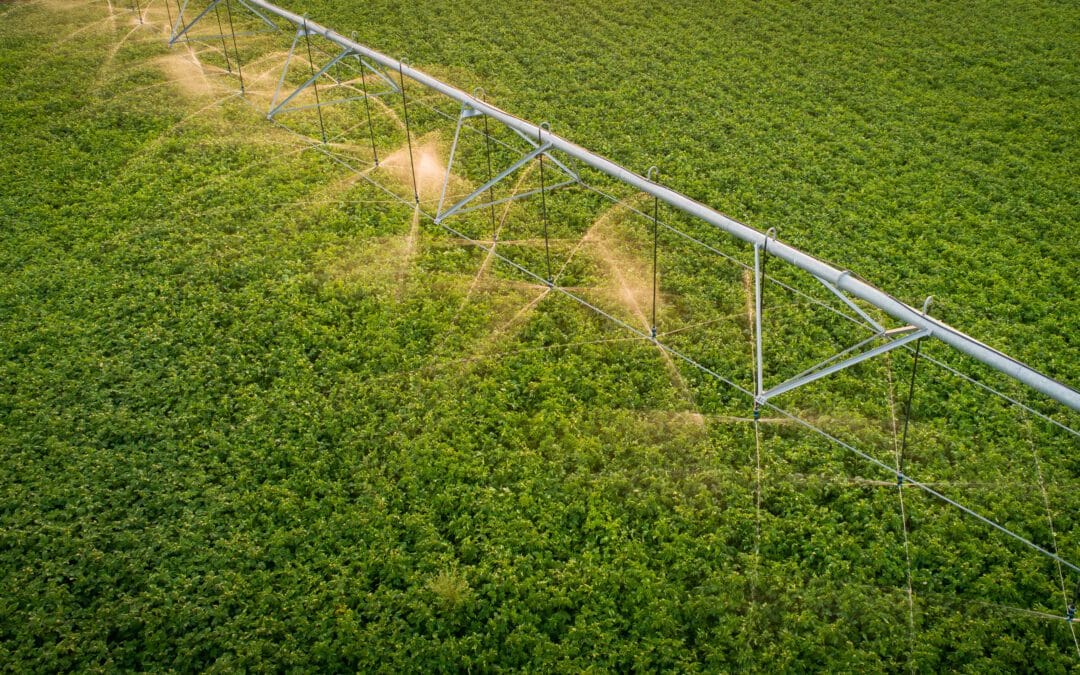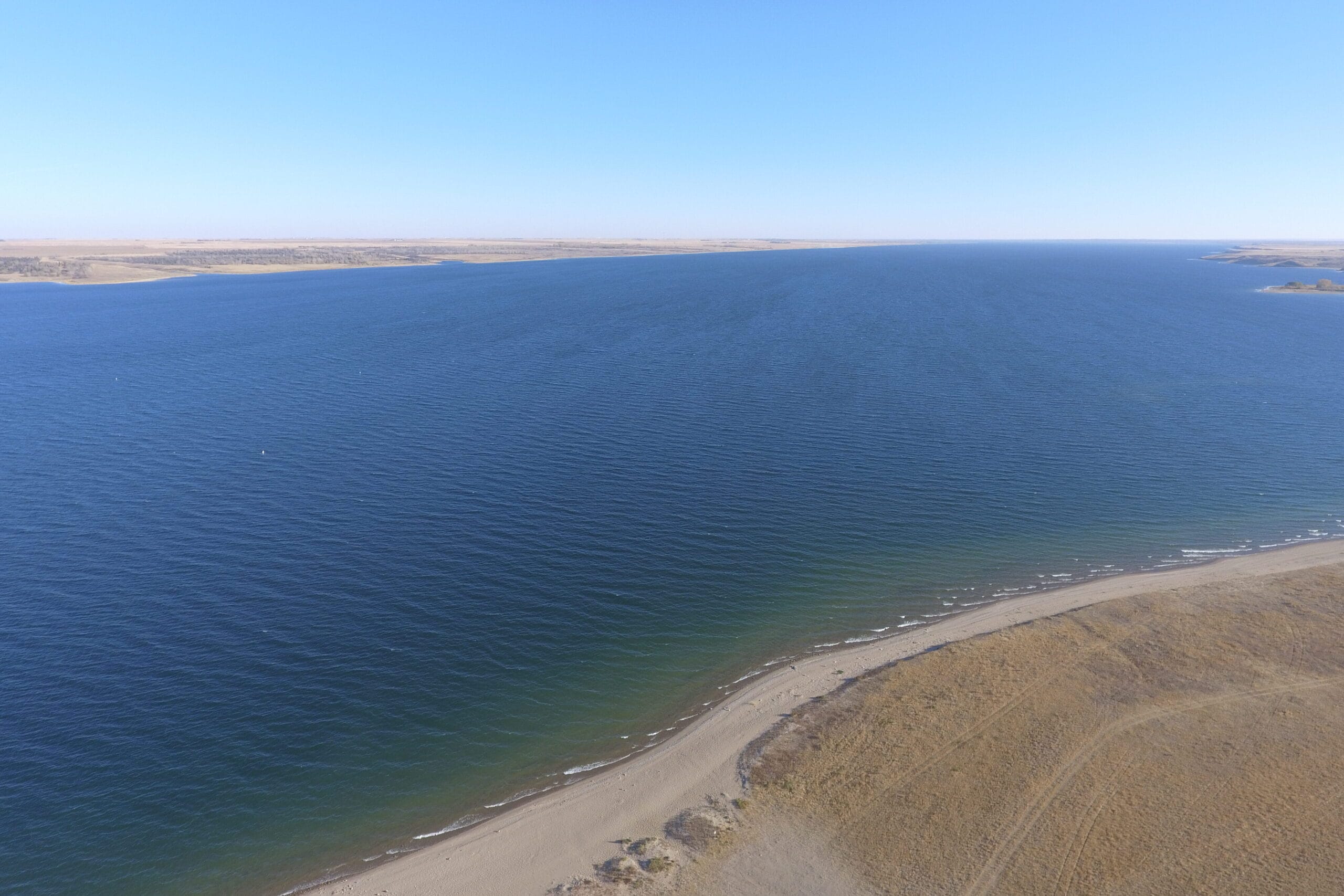
Irrigation in Saskatchewan: Proven Benefits
Saskatchewan, the land of the living skies, known for its agricultural prowess and roll your sleeves up and get to work attitude, is not as often recognized as a global leader in sustainability, food security and processing. But the reality is, Saskatchewan is poised to play a key role in feeding a growing world while securing a prosperous future for generations to come.
This sounds like a large undertaking, but it is quite simple, just add water.
As global food demand rises and the challenge of ensuring food security intensifies, Saskatchewan sits with one of the largest untapped freshwater reserves. By utilizing irrigation, it offers a unique opportunity to cultivate high-value crops, support sustainable agricultural practices and drive economic growth.
The Government of Saskatchewan announced a plan that includes various projects designed to enhance and extend the reach of irrigation. These projects support the province’s 2030 Growth Plan, which aims to increase agriculture productivity, support economic diversification and ensure a sustainable water supply for future generations.
Irrigation Expansion
Irrigation expansion in Saskatchewan involves the creation of new, multi-user water supply systems. This process includes constructing new canals and pipelines and implementing modern irrigation technologies to improve water efficiency. The goal is to provide a reliable water source for agriculture and provide benefits for communities, recreation, industry, and the environment. Irrigation ensures that crops and livestock receive the necessary water to thrive even during periods of drought.
Projects Under Development
Currently, several key projects are underway as part of the province’s irrigation expansion efforts:
Westside Irrigation Rehabilitation Project: This project involves the rehabilitation and expansion of the existing Westside irrigation canal system, which will add 100,000 acres of irrigable land.
Duncairn Reservoir: Located near Swift Current, this reservoir supports multiple irrigation projects and municipal water supply. Recent assessments have identified additional water available for future irrigation development.
Quill Lakes Water Management: While primarily focused on addressing flooding and drainage issues, this project also explores opportunities for capturing quality water for irrigation expansion in the Quill Lakes Basin.
Old Wives Lake Watershed: A water availability and quality assessment was completed to address the growing demands for irrigation and economic development, improve water infrastructure operations, and ensure reliable water supplies for existing users. A RiverWare model was developed to evaluate current and future water management scenarios.
Lake Diefenbaker Planning Study: This project involves a feasibility study to assess the irrigation potential around Lake Diefenbaker. The study identified key development areas and cost estimates around the lake for future irrigation expansion.
Saskatoon Southeast Water Supply System (SSEWSS) Irrigation Expansion: In December 2022, 15,000 acres of allocation for non-district Irrigation was announced and is near completion in development. Currently a water management model is being developed to improve planning and operations for the SSEWSS system.
North Saskatchewan River: This project identified approximately 200,000 acres of potentially irrigable lands along the river. WSA’s next step is to engage with stakeholders in potential irrigation development blocks identified in the study to assess interest in development.
In addition to the projects the province is investing in, there has been over 81,000 irrigated acres added since the start of 2020 with the majority of those coming from private irrigation.
Benefits of Irrigation
The benefits of irrigation to Saskatchewan are significant. By “just adding water” to Saskatchewan’s fields through irrigation, it will create opportunities that extend far beyond farming. For producers, irrigation unlocks the potential to cultivate high-value crops such as fruits and vegetables, which require consistent water supplies and command higher market prices. With stable water access, producers can plan with confidence, mitigate the impacts of droughts and maximize yields.
This reliability leads to the establishment of value-added industries like food processing, packaging and distribution, all of which create jobs and inject wealth into the economy.
The ripple effects of irrigation expand into the province’s long-term prosperity. Projects like the Westside Irrigation Rehabilitation Project alone are expected to add a $5.9 billion to Saskatchewan’s economy. During its construction, the project will create 9,500 jobs and over time, it’s anticipated to generate more than 30,000 person-years of employment.
If value-added processing opportunities—such as food manufacturing—are factored in, the GDP impact could grow significantly, making irrigation one of the province’s most valuable long-term investments. The availability of water for irrigation can also act as a catalyst for industrial expansion. Industries that rely on a consistent water supply can benefit from the improved infrastructure.
The province has already seen success around Outlook. By adding water, what was once simply agricultural land has grown into a flourishing hub of value-added industries, turning Outlook into a vital part of Saskatchewan’s economy.
At Wolf Willow Winery, irrigation supports the cultivation of fruit, enabling the winery to produce fine wines and beverages. Nearby, Spring Creek Gardens operate over 2,000 acres, split between vegetables and potatoes, with facilities dedicated to washing, grading, packing and storing these crops for up to a full year. This ensures that Saskatchewan-grown produce is available well beyond harvest seasons, adding stability to the supply chain.
The numbers alone tell a remarkable story. Outlook hosts between 3,500 and 4,500 acres of potato production, yielding approximately 125 million pounds annually, a figure that underscores how irrigation fuels high-value crop production. Tuberosum Technologies Inc. takes this one step further, focusing on research and development to refine the efficiency and sustainability of potato farming. Meanwhile, Spudwyk Farms contributes to Canada’s culinary landscape by supplying The Little Potato Company, ensuring Saskatchewan-grown potatoes are enjoyed in households nationwide.
The pulse processing facility operated by Rudy Agro Ltd. specializes in irrigated crops such as marrowfat peas and dry edible beans, tapping into global markets and extending the reach of Saskatchewan’s agricultural outputs far beyond provincial borders. Additionally, Outlook’s irrigation system has supported the growth of 2,300 acres of seed canola in 2024, illustrating the broad range of crops that thrive under a reliable and consistent water supply.
This story and the benefits of irrigation stretch far beyond farming. It is about creating jobs, fostering innovation and building resilience. Irrigation enables producers to grow more, diversify their crops and reduce risks, further economic development and job creation in numerous different industries. The benefits of irrigation will be felt provincewide.
The irrigation expansion projects in Saskatchewan represent a step towards securing the future of the province’s agricultural sector and fostering economic growth. By increasing the amount of irrigable land, the project aims to provide a stable water supply, boost agricultural productivity and create jobs. As these projects moves forward, the Water Security Agency recognizes the importance to address environmental concerns and ensure that the benefits are shared equitably among all stakeholders, Indigenous communities, producers and the public.
For more information on irrigation in the province, you can visit wsask.ca and diefenbakerirrigation.ca, or you can email us at client.service@wsask.ca.



